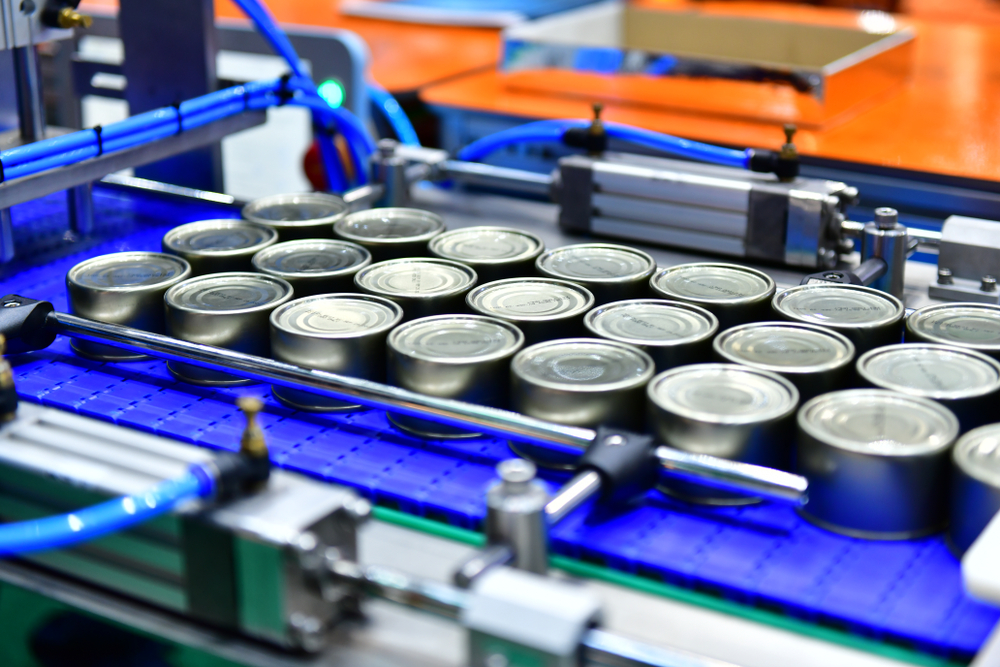Metal contamination in the food industry is a concern for both producers and consumers. This issue can occur when a product comes into contact with metal and can happen most often during handling and packaging.
Product safety is critical in many industries, especially in the pharmaceutical and food and beverage sectors. Let’s unpack the top methods and pieces of equipment to use to prevent metal contamination in products.
How Can Metal Contaminate Food During Packaging?
There are several ways in which metal can contaminate food during packaging:
- Metal in packaging material: If the packaging material contains metal, it can leach into the food. For example, metal cans are commonly used for packaging food, and the metal in the can might contaminate the food if it corrodes or has a defect.
- Metal in processing equipment: Metal can also contaminate food if it comes into contact with metal processing equipment. This can happen during manufacturing, such as when metal tools or equipment are used to mix, cut, or package the food.
- Metal from the environment: Metal can also enter the food during packaging if it is present in the environment. For example, if the packaging material is exposed to contaminated air, water, or soil, it can become contaminated with metal, which can leach into the food.
Top Sources of Metal Contamination in Food
Below are some of the major sources of metal contamination in the food industry, but there are similarities across all sectors.
Raw Materials
- Metal tags and lead shot
- Hooks and staples
- Wire mesh from materials containers
Poor Maintenance
- Improper clean-up after maintenance
- Metal shaving
- Cut wire
- Tools and screws
Processing Equipment
- Metal parts from the processing equipment
- Foil from reprocessed products
- Metals from milling
How to Prevent Metal Contamination?
The best way to prevent contamination is first to understand how it can happen and then create a multipronged approach to prevent it from happening. Below are some methods you should consider implementing or improving in your processing.
Use High-Quality Packaging and Equipment
- If you use tin or aluminum in packaging, ensure the metal has a laminate coating to help prevent metal transfer.
- Use packaging equipment that has metal-free zones.
Regularly Inspect and Maintain Equipment
- Identify and replace faulty equipment
- Maintenance should be carried out on a scheduled basis and recorded
- Have a preventative maintenance plan in place.
Follow Good Manufacturing Practices
- Use a metal detector for early detection of all incoming ingredients.
- Screen raw material containers to ensure they are free of stables or pins.
- Avoid using food, materials, and metals that have metal tags on them.
- Operators should not carry or wear watches, paper clips, finger rings, pins, necklaces, bracelets, earrings, non-metallic pens, or any forbidden items in the processing facility.
Consider Creating a Metal-Free Zone
A metal-free zone can be an effective way to prevent and accurately detect metal contamination. This is done by creating an area around an industrial or sanitary conveyor where no metal is present.
Conveyors are essential during product inspection because they provide unbeatable automation and accuracy. These conveyors are critical to helping keep metal and other foreign objects out, ensuring product safety.
Conveyors can initiate reject mechanisms when paired with a metal-free zone as needed, creating a streamlined inspection process. There are no fixed or moving metal parts near the metal detector to prevent false alarms and detections. Conveyors allow producers to automate metal detection and meet safety standards for packaging.
Contact us to learn more about how equipment, maintenance, and better practices can help prevent and detect metal contamination.




